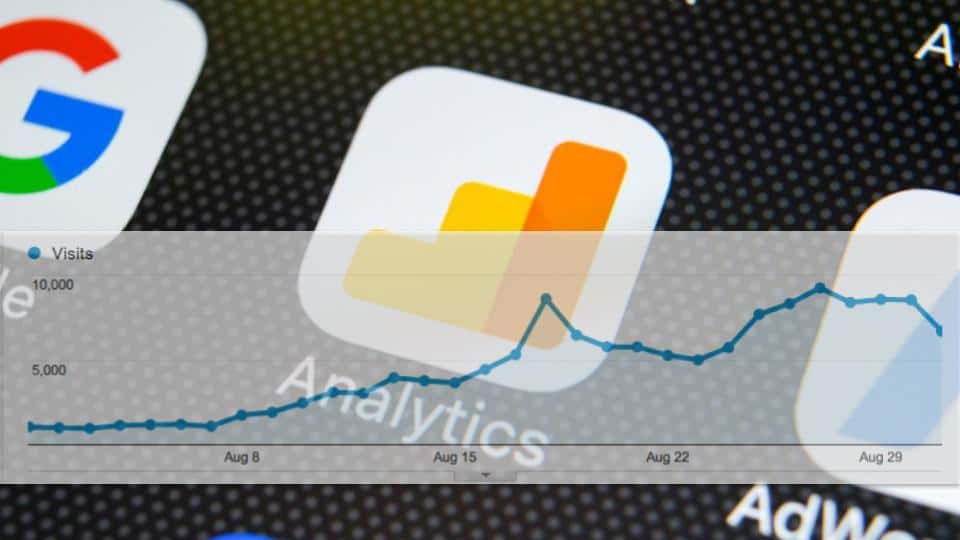
Clever Digital Publishing Strategies That Have Actually Worked
Get helpful updates in your inbox
[et_pb_section fb_built=”1″ _builder_version=”4.0.4″ hover_enabled=”0″][et_pb_row _builder_version=”4.0.4″ background_size=”initial” background_position=”top_left” background_repeat=”repeat” hover_enabled=”0″][et_pb_column type=”4_4″ _builder_version=”3.25″ custom_padding=”|||” custom_padding__hover=”|||”][et_pb_text _builder_version=”4.0.4″ background_size=”initial” background_position=”top_left” background_repeat=”repeat” hover_enabled=”0″]
Clever Digital Publishing Strategies That Have Actually Worked
Digital publishers know that the online publishing industry is constantly changing: GDPR, ads.txt, Google algorithm updates, AMP, PWAs, the rise of mobile traffic. This means that digital publishing strategies are also constantly changing to keep up.
Luckily, these innovations also mean that digital publishers know more about their websites and audiences than the publishers before them, and can use this data to grow faster than ever before.
Recently, Piper Lofrano (Ezoic’s U.S. Publisher Team Lead) recently shared data from 3 different publishers that had exponentially grown their organic website traffic and their total ad revenue. She went into detail about what digital publishing strategy each one used to achieve these dramatic results.
Below, I’ll share the video of her presentation — and for those of you that hate video — I’ve shared all of her of slides and step-by-step tips in the information underneath.
Piper has served as an expert and trusted resource for hundreds of unique websites, digital publishing groups, and brands. She interviewed and gathered data from 3 of the most successful publishers she worked with in 2018 and shared their stories recently at Pubtelligence (hosted at Google in New York).
Digital publishing has changed more than you think
It seems like there’s always something new to learn as a digital publisher. Just as you seem to get an idea of what you’re doing with Google’s algorithm, a new one is released. Working with ad partners finally makes sense, but now you need to manage an ads.txt file.
Publishing 10 years ago was less complicated: SEO meant links and keywords, content monetization was just building out a simple ad stack, and writing good content and managing a website didn’t require managing many other responsibilities.
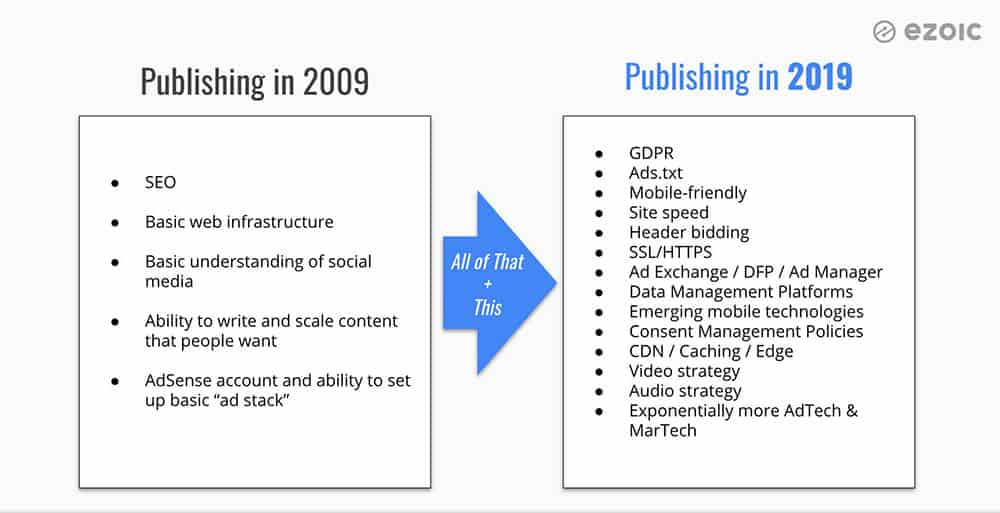
In 2019, the to-do list is much longer and more difficult.
Complexity in digital publishing isn’t all bad. There are many positives to being a digital publisher now versus 10 or 20 years ago.
There are more people using the internet now than ever before. Over 50% of the world has access to the internet, and not only are they using the internet, they really like digital media. – Piper Lofrano
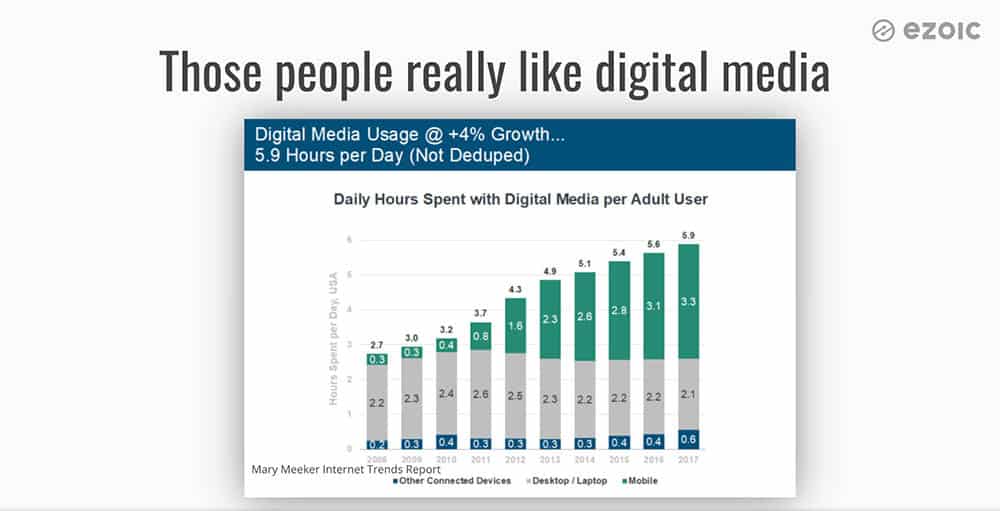
Digital media usage increases every year. This became an accelerated trend with the release of the iPhone in 2007. Advertisers have substantially decreased the amount of money they spend on print or television and reallocated that budget to digital media.
Digital media will be the number 1 place advertisers put their money by the start of 2020.
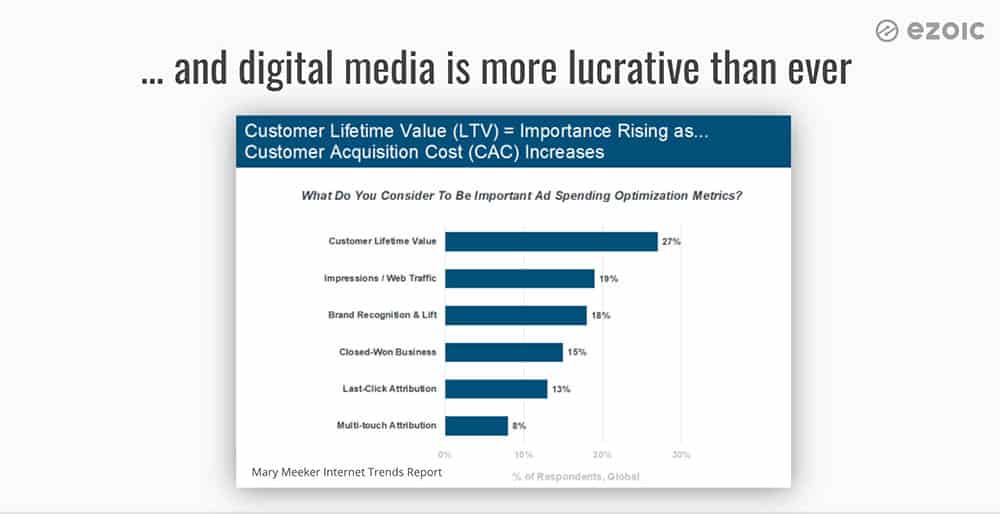
Digital publishers have never had a bigger revenue opportunity: impressions and web traffic are the second-most important item in ad spending optimization metrics, right behind customer lifetime value.
Just look at ad rates for publishers over the past 3 years in this live index.
Priorities for digital publishers have stayed the same
At the beginning of this year, we surveyed over 2,000 publishers and asked them what they feel is most important to them as a digital publisher.

Despite the growing complexity, the majority of publishers are still focused on traffic and content monetization, with a specific emphasis on traffic with SEO. Ultimately, publishers still understand that traffic is the key to sustainability — if you keep up your traffic, you’ll always have an audience that can be monetized.
During her talk, Piper reviewed three different publishers and how they have navigated the growing complexities of digital publishing to grow both traffic and revenue in the modern era. These publishers have not only sustained but increased their traffic and revenue by leveraging data about their websites.
Here’s what they did in detail.
1.) How AppleToolBox approached SEO & content marketing
AppleToolBox is a website about all things Apple: products, updates, how-tos, and tips. The website was purchased by Amanda and Sudz, both of which had no experience in online publishing prior to the purchase of the website.

Sudz spent 15-20 years at the Southern California Electric Company and was looking for a way to make income without being tied to an office. A friend of the couple suggested they buy a website because it can be managed anywhere in the world with an internet connection and be very lucrative if it’s done well.
After purchasing AppleToolBox, Sudz and Amanda wanted to focus on growing traffic and began using Ezoic as content monetization platform and automated testing technology in 2016 (their Ezoic case study is here).
Over the last two years, the website’s organic search traffic has increased by 250% and the number of keywords has also grown exponentially in that time.
So how did two inexperienced website owners improve traffic so drastically in just two years?
AppleToolBox did a keyword analysis to see if they were ranking unintentionally for multiple keywords. This can happen if a publisher writes an article targeting a specific keyword but it ends up ranking for additional keywords as well over time that they probably don’t even know about. This is a big opportunity for publishers to capitalize on!
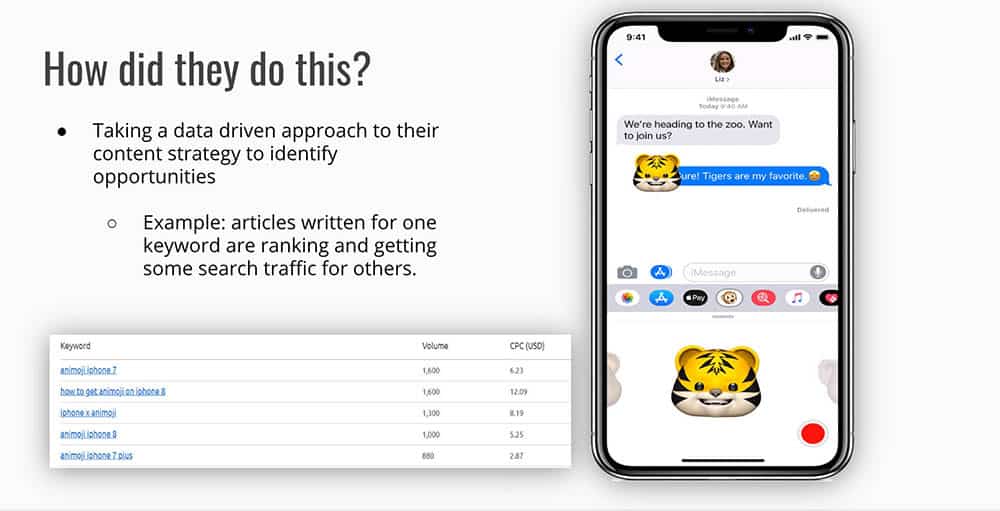
For example, AppleToolBox wrote an article on the new iPhone and its features, that article included information on Animojis. They found that lots of people were searching for information on the new Animoji feature, and in that search land on Apple Toolbox’s new iPhone page. While the page has information on the new Animoji feature, it doesn’t go into much detail about it. They improved their ranking for this popular keyword by going back into the article and adding more infomation about this feature.
“So many keywords, so much content, where do we start?”
When conducting a keyword analysis, you may see that you already rank number one for a search term. If you see that it’s a high-quality article with in-depth information, tutorials, and images, then there isn’t a lot of room for growth for this content.
Apple Toolbox used SEMrush to pull a list of keywords they ranked somewhere within position 6-20 with a monthly search volume between 1,000-500,000. This content likely falls on the second or third page of search results. By improving SEO for the keywords associated with this content, it can move the content to the first page of search results and help it win a lot more traffic. We’ve talked about finding organic keywords to increase traffic before if you want a refresher.

Improved content rankings… risk-free!
AppleToolBox didn’t want any changes they made to their content to have a negative impact on SEO or take away preexisting value.
They were able to do this because they didn’t alter any of their current content on the page —they just added to it. In the aforementioned example, they could go into their article about the new iPhone that ranks high for keyword ‘Animoji,’ and add additional headings, new paragraphs, new images, video tutorials, and also link to any new material about Animojis on their site.
Another publisher just did this as well and offered even more in-depth advice about using old content to drive massive traffic and content monetization growth.
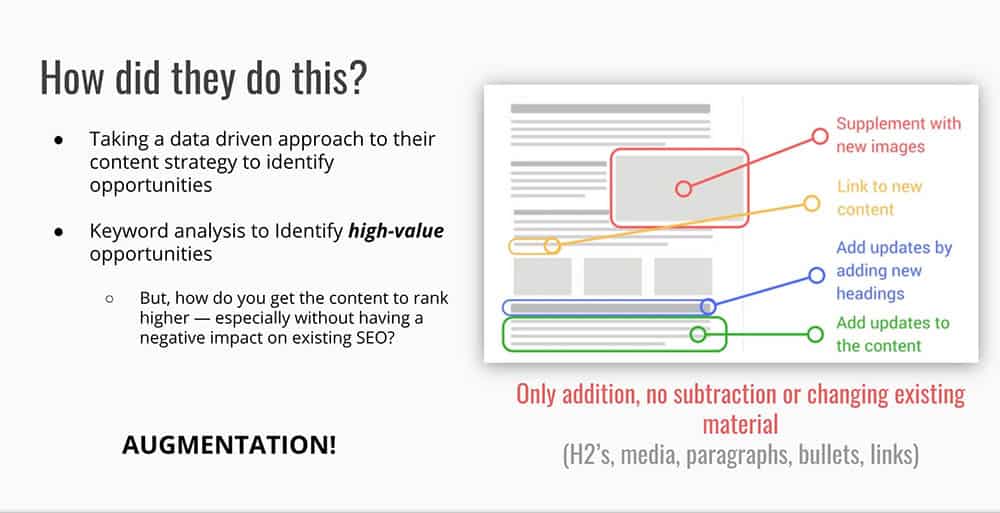
Now, searchers that come to AppleToolBox’s new iPhone article who are looking for information on the Animoji feature will find all of the information they’re searching for, right where they are already looking. This keeps visitors on the page and will increase its ranking for the keyword ‘Animoji’ while still providing all other users information about the new iPhone.
How did this affect content monetization and ad earnings?
AppleToolBox not only wanted to improve traffic but also prove a return on investment by taking a data-driven approach to their content. By using a content calculator that our very own Tyler Bishop created with a member of our data science team, they were able to see how much traffic and revenue was possible to achieve through this strategy.
That guide and calculator are available here.
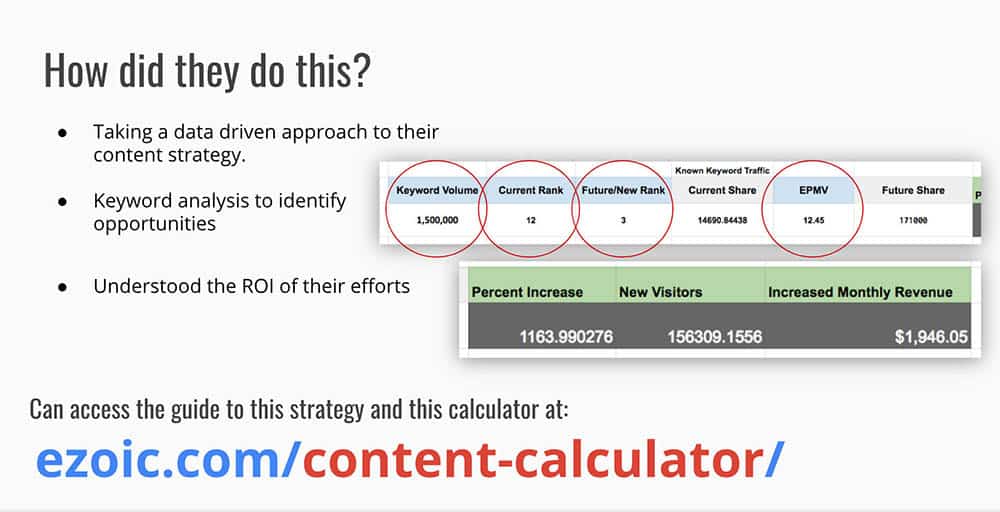
The results of this digital publishing strategy
When AppleToolBox first partnered with Ezoic in November 2016, they ranked for 66,000 keywords. A year later, they ranked for 217,000 keywords after learning this strategy from this very blog.
Today, AppleToolBox ranks for 350,000 keywords and has improved their organic traffic by 250%.
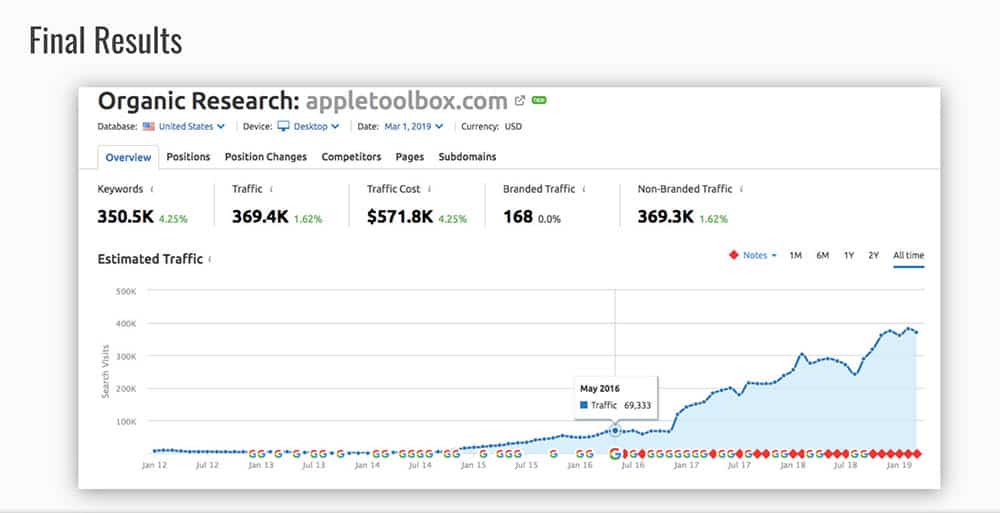
2.) SmallBizTrends improved content monetization by increasing ad rates
Who cares if you already have great content and steady traffic? If your website revenue is dwindling you might ask if the model is even sustainable.
Luckily, you can use data about to increase digital monetization by improving your ad inventory value, too.
To understand how to increase ad inventory value, we first have to know how advertisement bids work and review ad dilution.
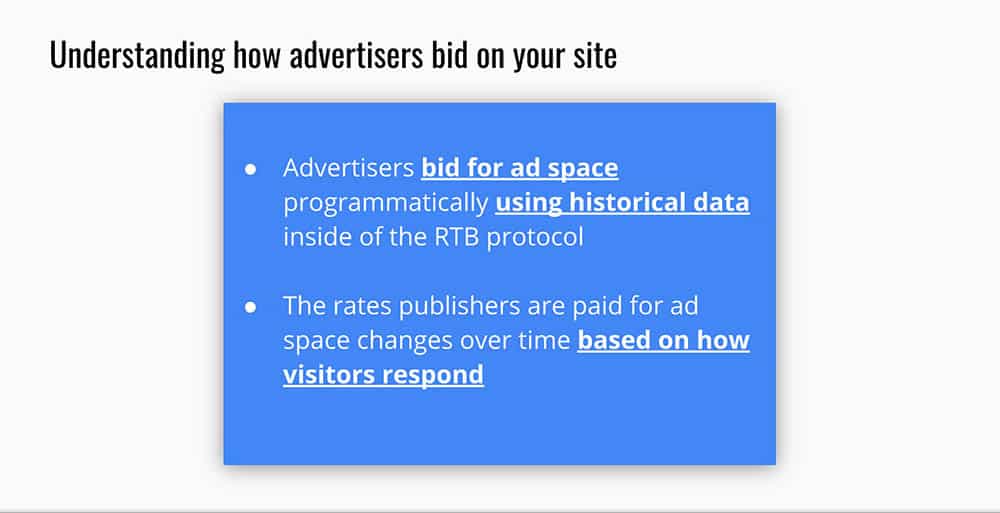
Advertisers often place bids for ad space on different websites programmatically using the Real-Time Bidding (RTB) protocol inside of Google or another ad server. The amount of these bids is based on historical data regarding traffic performance and what a previous advertisement in that location was worth. The rate that publishers are paid for these ad spaces is not fixed but will change over time based on how visitors respond to the ads (do they see them, do they click on them, do they buy things, do they bounce quickly from the site after clicking???)
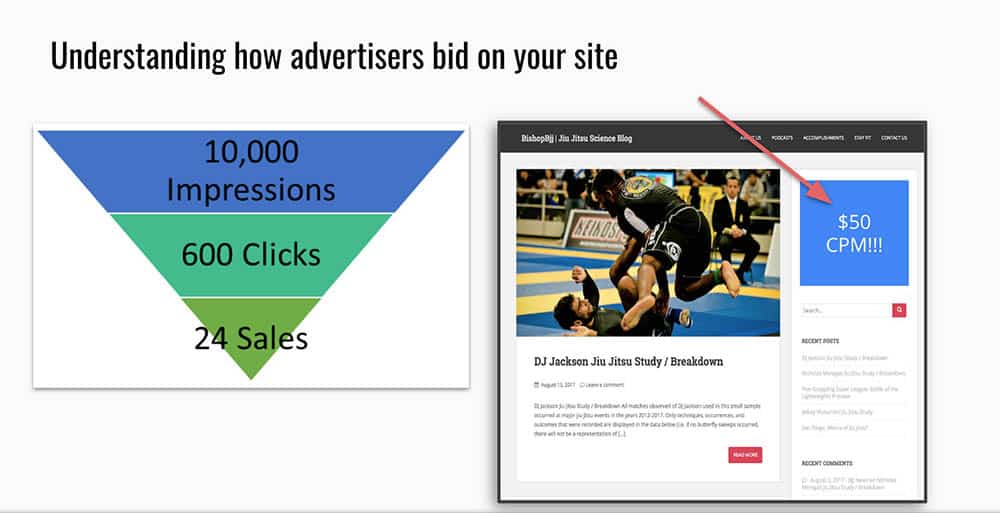
Example: Let’s pretend you own the following jiu jitsu site. You place a 300 x 250 advertisement space on a page on the site. Google knows that that ad unit typically gets a 1% click-through rate.
Now, there is a Brazilian ju-jitsu advertiser who wants to advertise on your site. To see an ROI, they need to sell their product at $100. The advertiser knows that the 300 x 250 ad unit has a 5% conversation rate, so that means their advertisement needs to get 20 clicks to achieve the return they want. Google will now automatically bid up to $50 if they’ve setup up a campaign correcly to help them achieve the desired ROI from the ad campaign.
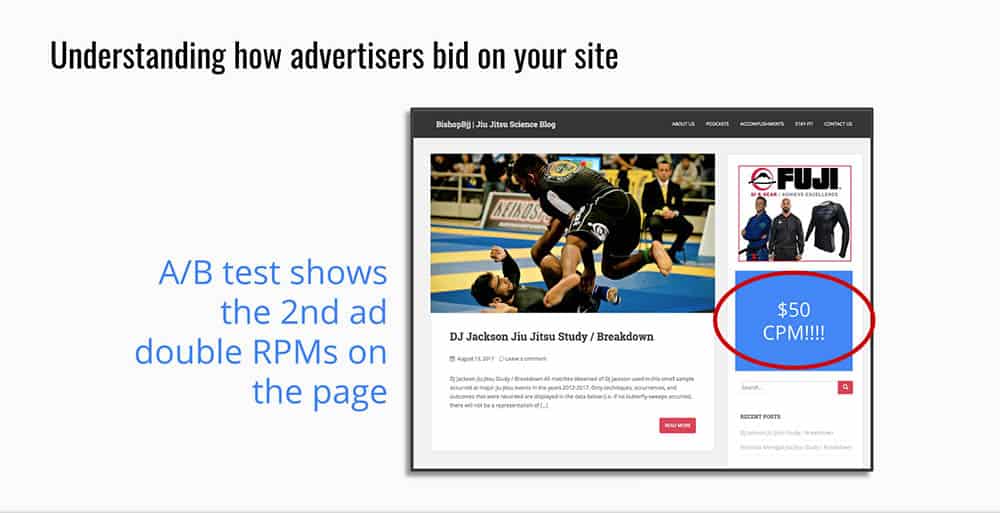
Ads dilute other ads which can cause lower rates over time
Now, as a publisher, you see that the ad space is valued at a $50 CPM (cost per mille) and want to see how two ads would perform. If one 300 x 250 advertisement is worth $50, then two could be worth $100, right?

Initially, yes. Since bids are based on historical data, you’ll likely see $50 for each ad unit for the first couple of months. Since the advertisements are bringing in $50 each as you hoped, you keep both ad units. Unfortunately, this is where ad dilution comes in. All ads have an impact on the other ads on a page, as well as user experience. Over time, the click-through rate on the ads will decrease and Google will automatically adjust the bids based on the historical data — if the data says performance has shifted, it will force the advertiser to adjust their bids.
Now, you’re accidentally showing twice as many ads and making the same amount of money that you were initially with one.
We made a video about how this works you can watch above.
Testing ad placements became a key part of their digital publishing strategy
Anita Campbell, founder and CEO of Smallbiztrends.com, began using Ezoic’s Ad Tester at the end of 2017. She and her team were interested in increasing revenue to recoup some previous significant revenue loss.
When Ezoic and Small Business Trends looked at the site’s user experience metrics, they found the following:

Since the majority of Small Business Trend’s traffic only engages with the top half of the page, it seemed that they should maximize for viewability and put all of the ad locations on the top 50% of the page. But, as we have seen, all ads dilute each other; placing all of the ad locations at the top of the page will impact user experience and create ad blindness.
On the other hand, they don’t want to put all of the ads on the bottom 50% of the page because we know that only 30% of users are going to end up there.
Small Business Trends worked with Ezoic to test a few additional ad placeholders in the second half of the page for Ezoic’s machine learning to only show these ads to the visitors most likely to view and interact with these placements.
Ad placements done using machine learning increased their website earnings
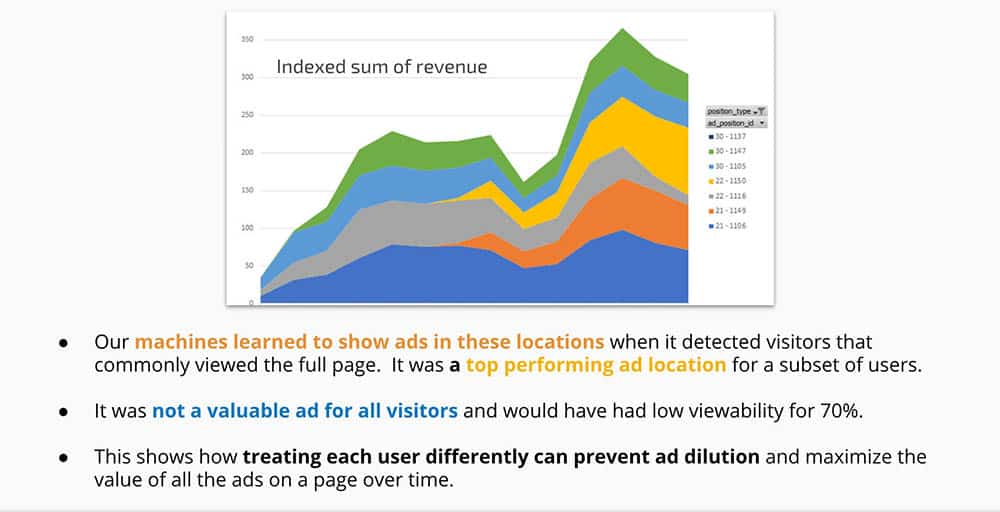
For the 30% of visitors that scroll to the bottom of the page, A.I. learned to show ads in these additional lower locations when it detected these visitors. For the other 70% of the users, it learned that advertisements in the bottom half of the page wouldn’t be valuable. By treating each user differently, Small Business Trends prevented ad dilution, increased the value of the ads on their site over time, and bettered user experience.
After only four months of heavily testing ad locations, Small Business Trends increased its revenue by 637%. Additionally, their EPMV (earnings per thousand visitors) increased by 413% in under a year.
Ensuring the value of the ads on your websites is high will become increasingly important with Google’s switch to a first-price auction. Intelligently testing ad locations and providing unique user experiences is one way to do so (you can use Ezoic to do this for free here).
3.) Publisher segments visitors to maximize digital monetization per visitor
Publishers often think of their website traffic as one unit —just ‘traffic’ —when really, each visitor is unique. As shown in the previous example, it’s beneficial to both publishers and visitors to have experiences changed based on their behavior.
Affordable Housing Online wanted to get the maximum amount of revenue out of every visitor’s session on their website. One way you can do this is through simple segmentation of your traffic, such as new users versus returning users.
When Ezoic reviewed Affordable Housing Online’s traffic, this is what we found when looking at that segment of visitors…
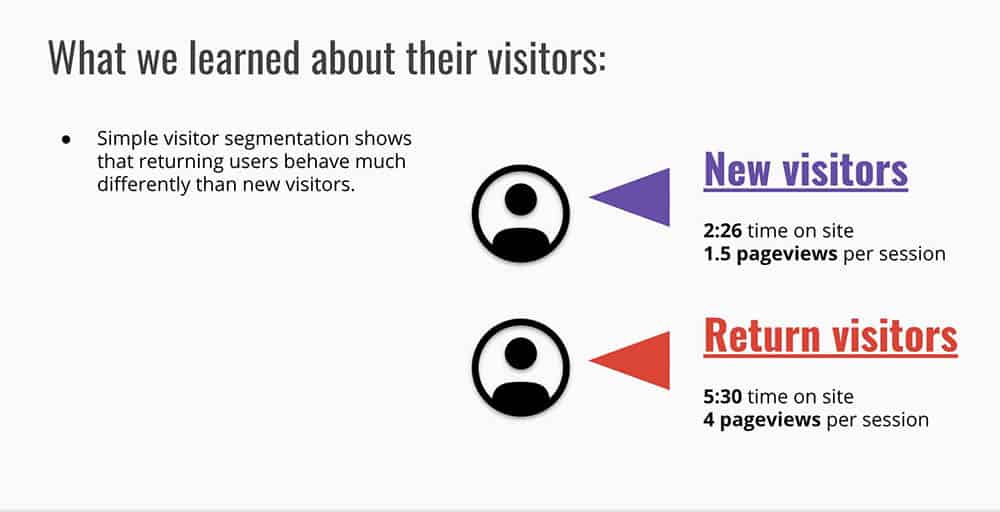
As you can see, new visitors and return visitors interact with the content differently.
New visitors don’t spend as much time on the website or view as many pages, whereas return visitors stay on the site over double the amount of time and view over double the pages. We shouldn’t give them the same experience because they aren’t behaving the same.
We took a look at how new users engaged with the website:

Testing showed that for new users, the ad density threshold, or the number of ads you can show on a page without affecting user experience, was eight ads.
To maximize RPM (revenue per mille), we would show eight ads per page. If the CPM is $1, we will make $8 RPM and an average of $12 per 1,000 visits (also known as total EPMV) – earnings per thousand visitors).
Returning visitors have a lower ad density threshold:
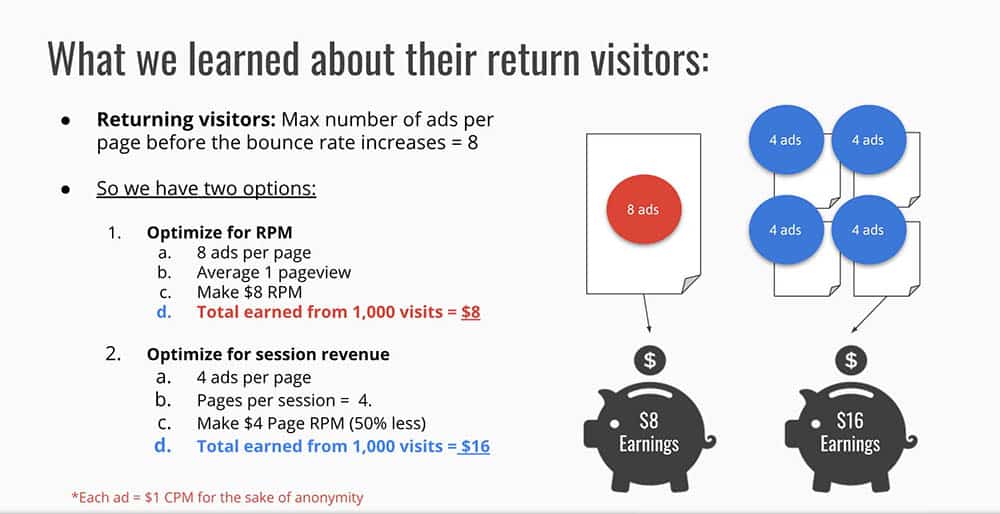
If we once again optimize for RPMs and show eight ads per page, return users will only view one page. This brings the total earnings per 1,000 visitors to $8 for this group.
However, if we spread out the number of ads a return visitor sees, they will visit more pages. This is optimizing for total revenue (EPMV) rather than page revenue.
In this example, Affordable Housing Online is making twice as much by actually showing fewer ads to just this specifc set of visitors. If we show four ads per page, the page RPM is only going to be $4 a page, BUT visitors will visit an average of four pages. This means the overall earnings per 1,000 visitors will be $16. If they showed new visitors only 4 ads, they’d only make a total of $4 total. By delivering both sets of visitors differnt ad density, they can double their revenue and keep both groups from bouncing.
Segmenting doesn’t stop there…
We can add another layer to this by even further segmenting our visitors. Now, we will segment return visitors by traffic source: organic search and Facebook.
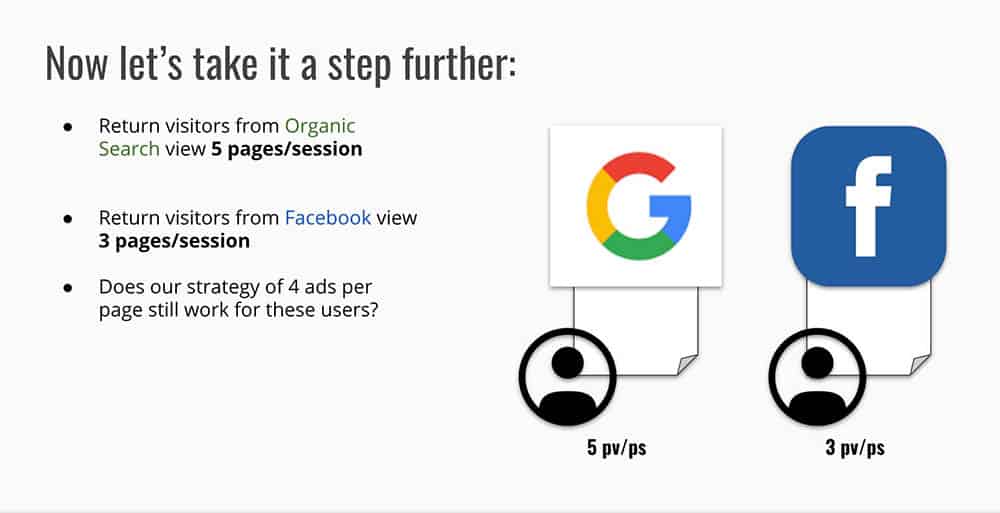
Data for Affordable Housing Online showed that returning users from organic search are more engaged —they view five pages per session. Return visitors from Facebook only view three pages per session. However, the ad density threshold for return visitors from Facebook is higher. These visitors will still visit three pages if each page has no more than five ads.
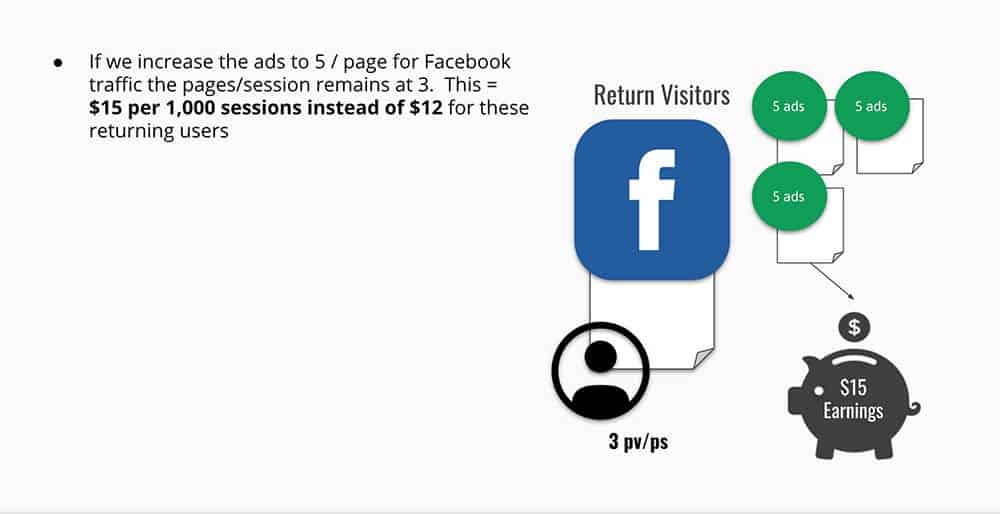
Return users from organic search are more complicated.
If you want to segment visitors to monetize your content, you have to look at all the data or leverage tools that can help you do this automatically.
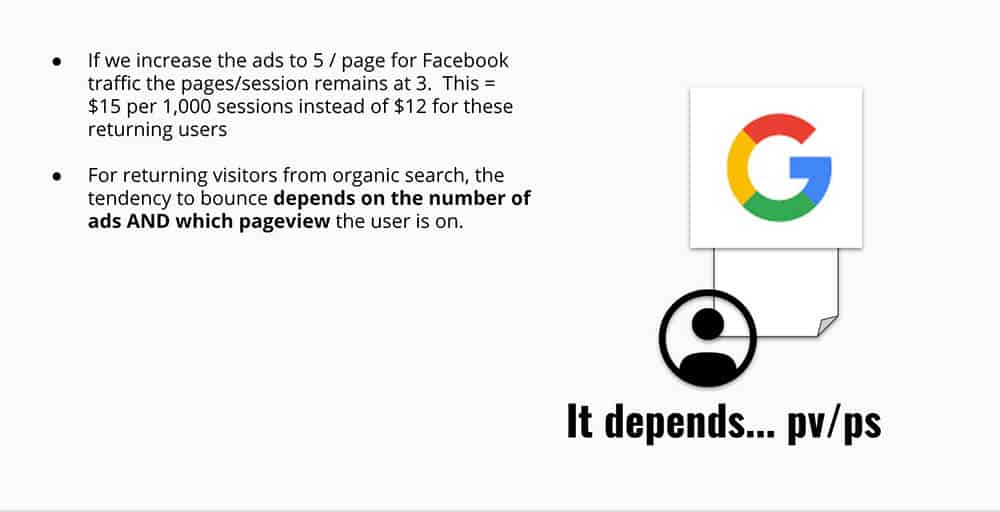
For return users from organic search, their tendency to bounce depends on the number of ads shown and which pageview they’re on. Return users who are more engaged can actually be shown more advertisements but first, have to prove their intent on the site.
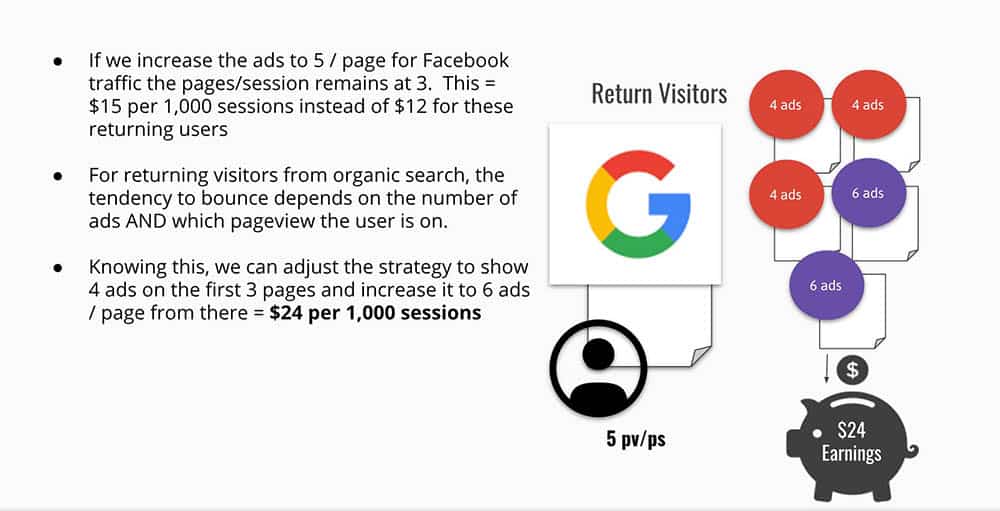
Since return users from organic search visit five pages per session, Ezoic starts by showing a lower amount of ads first.
For the first three pages a return user from organic search visits, Ezoicl only shows four advertisements. Once a user has proven they intend to stay on the site, the remaining two pages will show six ads, which equates to $24 in session revenue.

By allowing Ezoic to automatically segment visitors Affordable Housing generated an average of $19.50 per 1,000 visitors, which is a 63% increase in revenue per visitor.
The content monetization model that generates the best returns
Affordable Housing Online used the previous segmentation process and saw its revenue per visitor increase approximately threefold.
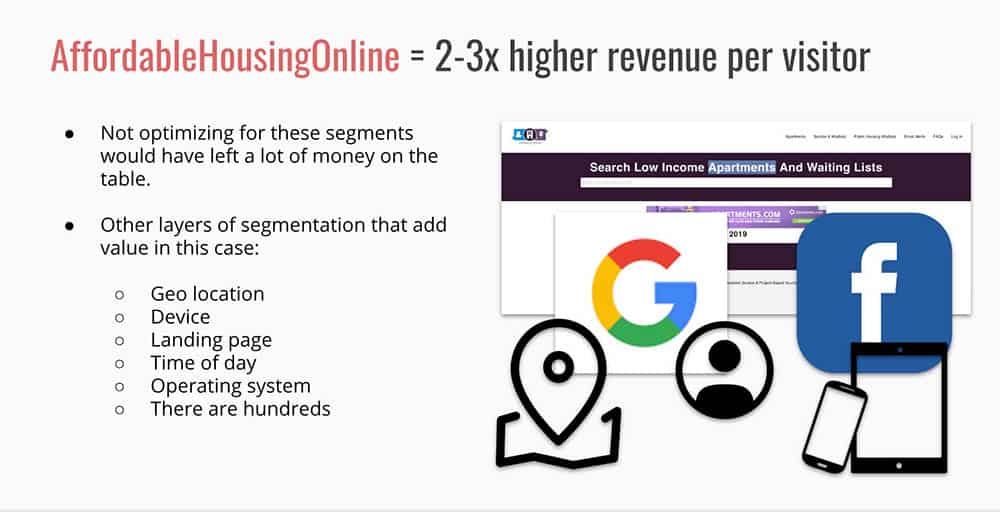
Segmenting visitors into new and returning is a very simple segmentation but there are actually hundreds of data points you can use to segment traffic, including geolocation, device, landing page, time of day, and operating system. What segmentation you need to use will depend on your website.
There are a lot of internet monetization models that fit digital publisher, but a lot of publishers don’t fully understand the potential that using data to passively generate ad revenue can provide. Often, this is because they’ve damaged ad rates or failed to segment their visitors.
What digital publishing strategies did we learn from these publishers?
As shown by the three case studies Piper presented, if you treat all your users the same, you’re going to leave a lot of money on the table and affect user experience. If you give users what they prefer, you can maximize both at the same time. The key to accomplishing this is by using the data available to you intelligently and intentionally.
Digital publishing in 2019 may be more complicated, but it also has the greatest opportunity!
Thoughts, let us know and we’ll have Piper answer them directly.
[/et_pb_text][/et_pb_column][/et_pb_row][/et_pb_section]
Featured Content
Checkout this popular and trending content

Ranking In Universal Search Results: Video Is The Secret
See how Flickify can become the ultimate SEO hack for sites missing out on rankings because of a lack of video.
Announcement

Ezoic Edge: The Fastest Way To Load Pages. Period.
Ezoic announces an industry-first edge content delivery network for websites and creators; bringing the fastest pages on the web to Ezoic publishers.
Launch

Ezoic Unveils New Enterprise Program: Empowering Creators to Scale and Succeed
Ezoic recently announced a higher level designed for publishers that have reached that ultimate stage of growth. See what it means for Ezoic users.
Announcement
